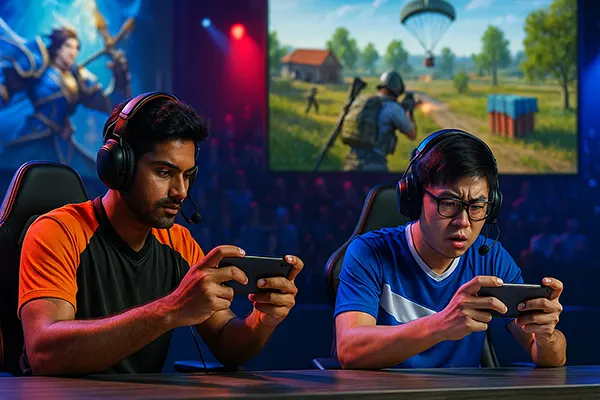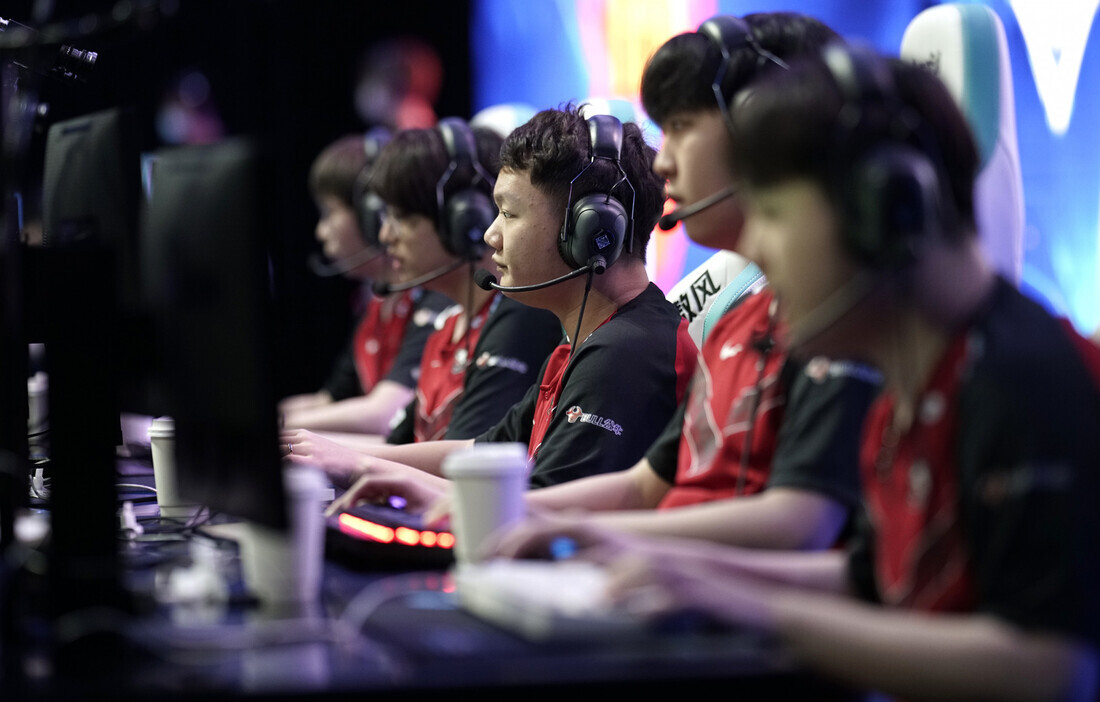The Rising Role of Mobile Esports in Betting 2026: What Mobile Legends and PUBG Mobile Will Reveal?

Mobile esports has grown into one of the most influential segments of competitive gaming, and by 2026 its impact on betting patterns is expected to reach an entirely new level. Titles such as Mobile Legends: Bang Bang and PUBG Mobile continue to define audience behaviour, discipline formats, and data-driven betting activity. Their evolving ecosystems, tournament frameworks and audience metrics shape how bettors evaluate strategies and assess competitive trends across regions.
Market Growth of Mobile Esports Heading into 2026
The global shift towards mobile-first gaming continues to accelerate, with mobile esports attracting larger audiences than several established PC titles in Southeast Asia, South Asia, the Middle East and parts of Europe. Industry forecasts for 2026 project a higher concentration of tournament viewership on handheld formats, driven by accessibility, low hardware barriers and expanded publisher support. This trend creates broader engagement for bookmakers who increasingly view mobile esports as a core component rather than a supplementary category.
Organisers have doubled investment in mobile-centred competitions since 2023, improving production quality and forming partnerships with regional broadcasters. These enhancements allow for more consistent scheduling, larger competitive circuits and data-rich match formats. For bettors, this translates into more measurable metrics such as hero selection tendencies in Mobile Legends or zone prediction patterns in PUBG Mobile, building a more structured betting environment.
By 2026, regulatory bodies and national esports associations are expected to improve oversight across mobile tournaments. Standardised rulebooks, unified roster policies and cross-regional officiating frameworks strengthen reliability for both fans and bettors. Through greater transparency, markets for mobile esports become increasingly aligned with traditional sports in terms of risk evaluation and analytical depth.
Audience Behaviour and its Influence on Betting Markets
Viewership demographics for mobile esports show significantly higher engagement among 18–34 age groups, many of whom follow teams throughout entire seasonal circuits. This creates predictable betting cycles around league phases, roster changes and meta shifts. As audience loyalty strengthens, bookmakers can introduce season-long markets similar to football futures, but tailored to mobile esports structures.
Social media ecosystems surrounding Mobile Legends and PUBG Mobile play a major role in tracking public sentiment. Because fans closely monitor training scrims, patch updates and roster negotiations, match odds often shift rapidly in response to community-driven insights. Bettors in 2026 will increasingly rely on verified performance data rather than informal speculation, as publishers expand open-data programmes for competitive transparency.
The intersection between real-time engagement and betting data contributes to more dynamic markets. Live betting, particularly during high-pressure late-game phases, becomes more nuanced as analytical tools interpret objective control, team positioning and situational probabilities. With mobile titles offering faster match pacing than many PC disciplines, bettors gain more opportunities to evaluate rapidly changing scenarios.
Mobile Legends: Bang Bang and Its Betting Potential in 2026
Mobile Legends maintains one of the most complex competitive metas in the mobile sector. Its hero pool, frequent balance updates and diverse regional playstyles provide a rich landscape for detailed statistical analysis. In 2026, bookmakers anticipate broader betting demand around hero bans, early-game aggression metrics and macro-control tendencies, particularly in the MPL and M5-style global events.
The professional ecosystem of Mobile Legends is supported by multi-tier leagues, extensive academy systems and data-based coaching programmes. This leads to greater performance consistency across top teams, allowing bettors to form long-term strategic predictions grounded in historical match data. Analysts expect that by 2026, more detailed datasets—such as lane pressure distribution and rotation efficiencies—will become available through official tournament APIs.
With international expansion continuing, Mobile Legends tournaments attract significant regional variation in playstyles. Southeast Asian teams focus on coordinated skirmishing, while European rosters emphasise disciplined map control. These tactical differences diversify betting markets and provide bettors with region-specific insights that influence match predictions throughout the 2026 competitive calendar.
How the MLBB Esports Scene Shapes Betting Patterns
In MLBB competitions, match outcomes are heavily influenced by drafting dynamics. Bettors who understand priority picks, comfort heroes and synergy compositions gain a competitive edge when evaluating early-game win probabilities. Draft-related markets are expected to grow further in 2026 as teams adopt more transparent analytical frameworks.
Another factor shaping betting patterns is player positioning behaviour. Objective fights around Lord, Turtle and jungle resources provide measurable benchmarks for predicting momentum swings. With more matches offering detailed heatmaps and positioning data, bettors can form evidence-based assessments rather than relying solely on intuition.
Increasing international exposure strengthens MLBB’s statistical reliability. As tournaments become more standardised and interregional play expands, match results reflect a broader competitive field rather than isolated local metas. For bettors, this means more accurate comparative data when forecasting outcomes for cross-regional events.

PUBG Mobile: Tactical Depth and Betting Opportunities in 2026
PUBG Mobile offers one of the most data-driven ecosystems in mobile esports. Its match structure incorporates survival metrics, rotation strategies, zone prediction, loot path mapping and vehicle usage statistics. These variables enable bookmakers to shape highly specific markets ranging from placement predictions to team-specific survival rates. By 2026, with more advanced machine-learning analytics available, bettors will gain deeper insights into map-by-map competitive behaviour.
Professional leagues such as PMGC and PMSL continue to expand and refine their formats. Organisers emphasise competitive fairness through standardised drop spots, anti-cheat integration and refined scoring systems. As a result, historical performance indicators become stronger, helping bettors form stable analytical models. With match pacing heavily influenced by terrain and circle generation, the 2026 landscape will offer even more interpretive depth.
PUBG Mobile teams increasingly rely on full-time analysts who specialise in trajectory modelling, combat timing and cross-map pressure distribution. As these analytical practices mature, the competitive field grows more predictable, which benefits bettors seeking evidence-based frameworks. With publishers investing in public analytics dashboards by 2026, statistical transparency is expected to reach its highest level in the title’s history.
Data-Driven Factors That Influence PUBG Mobile Betting
Rotational discipline is one of the strongest predictors of long-term performance. Teams that consistently achieve optimal positioning during the mid-game typically outperform rosters reliant on late-game improvisation. Understanding these tendencies allows bettors to assess stable competitive behaviours across multiple tournament stages.
Another key factor is team-to-team combat readiness. Analysts monitor accuracy metrics, reaction timing and equipment optimisation to identify squads capable of maintaining competitive consistency. These data points help bettors evaluate whether a team can manage resource scarcity and sustain pressure throughout extended match sequences.
Furthermore, map-specific tendencies play a crucial role in prediction accuracy. Teams adapt to unique terrain features on Erangel, Miramar and Livik, creating patterns that bookmakers and bettors can incorporate into probabilistic modelling. By 2026, with enhanced data availability, these insights will become even more precise and reliable.



